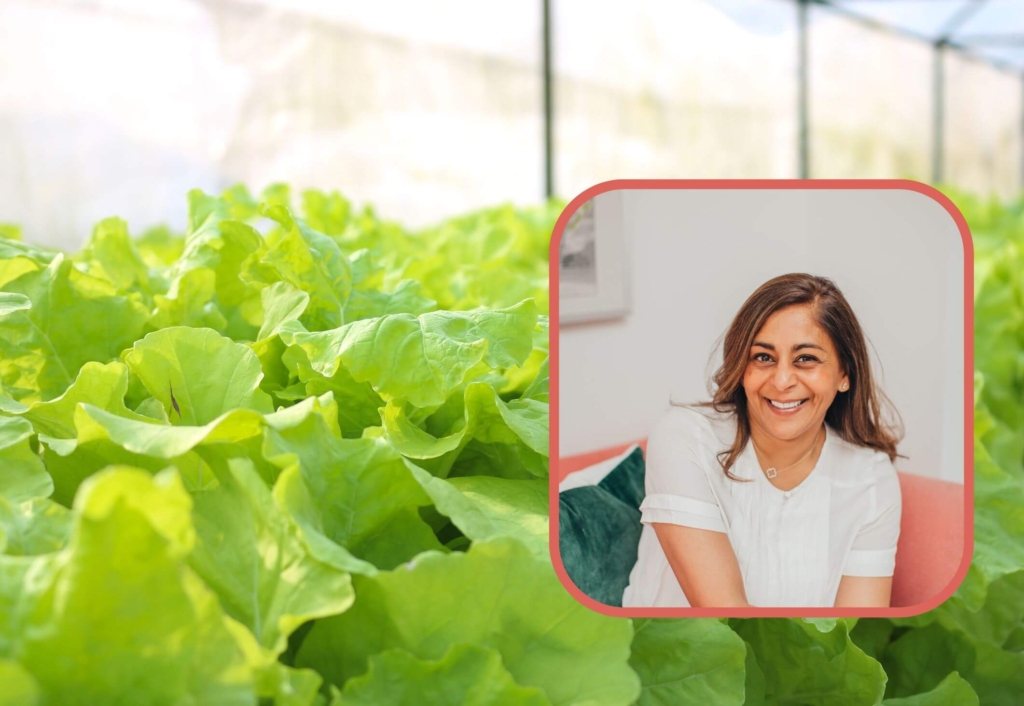Yvonne Pinto: On the necessity of agricultural innovation

With climate change, war in Europe and a protracted global recovery from Covid-19, innovations within global food and agricultural systems have become imperative.Katapult mentor and agriculture expert, Yvonne Pinto outlines the factors driving the need for reform in the sector and the hopes provided by the adoption of new technologies.
The impacts of global warming are increasingly evident from higher temperatures, changing precipitation patterns, sea level rises, and growing frequency and intensity of extreme weather events such as droughts, floods, extreme heat, and cyclones are already reducing agricultural productivity and disrupting food supply chains. Beyond its direct impacts on production, climate change also impacts livelihoods, communities, and sustainability through interconnections among economic, environmental, social, and political spheres.(1.)
Even in the absence of climate change, food systems face enormous challenges and demands. Hunger and malnutrition are rising, and over 3.1 billion (2.) people currently cannot afford a healthy diet. Since 2021, there are 278M more Africans that are food insecure. The world is not emerging from covid-19 as we had expected with 9.8% of people undernourished, an increase of 1.8% since 2019. Simulations predict that there will be increases of 13M more hungry people in 2022 and 19M more in 2023.
The war in Ukraine has disrupted the global food production system. The two countries involved, produce roughly a third of the world’s ammonia and potassium exports, essential ingredients in fertilizer. They also supply about 30 percent of global exports of wheat and barley, 65 percent of sunflower seed oil, and 15 percent of corn.
Cereals and baked goods cost 15% more than they did last year. Milk and dairy products are 14.9% higher, and fruits and vegetables are up 9.3% over the year (3.). By some accounts the cost of fertilizers has risen In Africa between 350-600%. The acquisition, affordability and use as expected have diminished proportionately.
Many countries rely heavily on imports from Russia and Ukraine and are concentrated in Central and Western Asia, the Middle East and North Africa. While Syria and Yemen, are already experiencing long-standing refugee crises, all importing nations will be affected, unless they have longer-term fixed-price contracts with suppliers or robust hedges (4.).
There have been dramatic rises in average inflation rates from 7.8% in January 2022 to 9.2% globally. Pew Research Centre recently reported inflation rates doubled in the 37 of the 44 most advanced economies (Israel experienced a 25fold increase, the US quadrupled in the last 2 years and Turkey was 54.8% in the 1st Quarter of 2022 (5.).
Food systems are often the world’s largest employer, but for many, particularly women, youth, and other vulnerable groups, agriculture-based livelihoods are precarious. Global aspirations envision food systems that are far more nature-positive, deliver improved and more resilient livelihoods, empower disadvantaged groups, and produce a healthy mix of foods at affordable prices.
Food systems are estimated to generate as much as 34 percent of total greenhouse gas (GHG) emissions, which stem from agriculture and land use, storage, transport, packaging, processing, retail, and consumption (6.). Continued progress in energy and transport sector technologies can reduce fossil-fuel use and emissions throughout food systems, including in irrigation, processing, transport, cold storage, and waste recycling. It is the only economic sector with serious potential to become a net emissions sink — pulling more GHGs out of the atmosphere than it emits — through creation and protection of carbon sinks such as forests. It is important to bear in mind that the least developed countries accounted for only 3.3 percent of global GHG emissions in 2019.
Food production, distribution, and consumption practices must be adapted. At the farm level, adaptation must address changing growing conditions, water scarcity, droughts and floods, increased risks of destructive weather events, and related risks of disease and pests. Along value chains, storage and logistics will also require efficiency gains, and price volatility will increase, with implications for processors, traders, and consumers as well as farmers.
There are promising innovations supporting adaptation and resilience while also increasing productivity. These climate-smart innovations include new crop varieties that better withstand climate shocks and improve yields, solar energy for storage, and digital technologies to facilitate knowledge and services for rural producers. Many climate-smart innovations, such as no-till farming, agroforestry, and landscape management can contribute to sequestering carbon or reducing emissions. However, technical innovations can thrive only in enabling environments, with policy incentives and governance approaches that promote climate-positive change and inclusion of all actors.
Policies and institutions at local, national, and international levels must incentivize new technologies and practices and ensure adequate finance. They will need to recognize potential trade-offs —yields and efficiency — between sustainable systems and existing or other modern farming practices and between sectors, such as energy and water.
Significant GHG mitigation can also be achieved by reducing nitrous oxide emissions from fertilizers and methane emissions from paddy rice and enteric fermentation (from cattle and other ruminant digestion) as well as decreasing emissions intensity through sustainable production systems and reduced food loss and waste.
A portfolio of current technology innovations can accelerate sustainable food systems transformation. Many innovations have proven potential to raise productivity and reduce GHG emissions in agrifood production. Irrigation technologies, such as drip irrigation and solar power pumps, can improve yields and reduce emissions. New genome-editing technologies, such as CRISPR, have rapidly been able to develop crop varieties suited for climate change adaptation and mitigation. Improved cold chain technologies powered by solar energy and new drying methods are increasing food quality and availability and reducing food waste, particularly for perishable nutritious foods.
Digital innovations are revolutionizing production, markets, and delivery throughout food systems, with great potential for improving productivity and quality and reducing natural resource use and food loss and waste. This broad array of innovations in data use stretches from precision agriculture and improved weather forecasting to blockchain-based product quality and sustainability traceability and to e-logistics and e-commerce for enhanced value chain efficiency.
____
This year Katapult completed its first African accelerator program in Mauritius and will look to launch its second Africa program this fall. Katapult Africa’s accelerator programs invest in and help scale the most impactful food- and agri-tech startups looking to deliver innovative solutions on the African continent and beyond.
Learn more about Katapult Africa.
In our mission to build a thriving world for all, Katapult invests in Ocean, Climate and Food-tech. See our full portfolio and get in touch with our investment team here
References:
1. International Food Policy Research Institute (IFPRI). 2022. 2022 Global food policy report: Climate change and food systems. Washington, DC:
International Food Policy Research Institute (IFPRI). https://doi.org/10.2499/9780896294257
2. FAO, IFAD, UNICEF, WFP and WHO. 2022. The State of Food Security and Nutrition in the World 2022. Repurposing food and agricultural policies to make healthy diets more affordable. Rome, FAO. https://doi.org/10.4060/cc0639en
3. https://www.cnbc.com/2022/08/10/how-to-save-on-groceries-amid-food-price-inflation.html
4. https://www.mckinsey.com/business-functions/strategy-and-corporate-finance/our-insights/war-in-ukraine-twelve-disruptions-changing-the-world
5. https://www.pewresearch.org/fact-tank/2022/06/15/in-the-u-s-and-around-the-world-inflation-is-high-and-getting-higher/
6. Crippa, M., Solazzo, E., Guizzardi, D. et al. Food systems are responsible for a third of global anthropogenic GHG emissions. Nat Food 2, 198–209 (2021). https://doi.org/10.1038/s43016-021-00225-9

